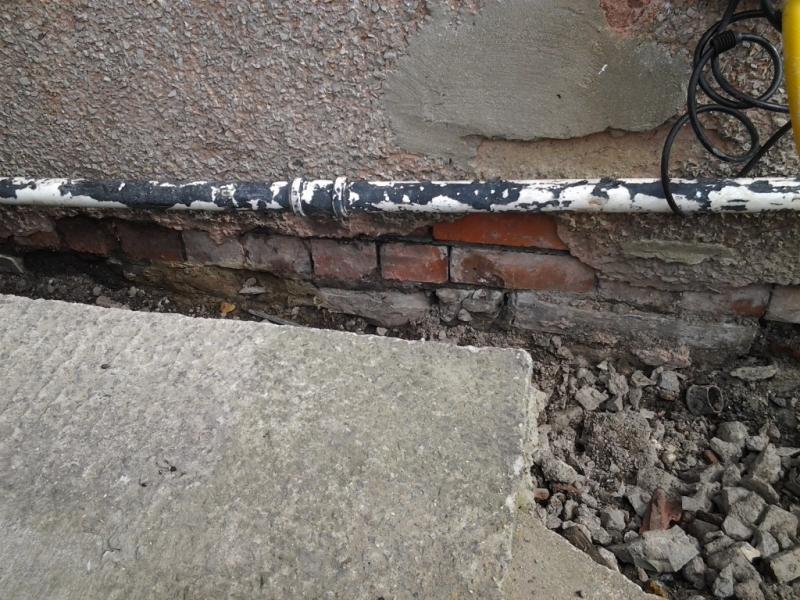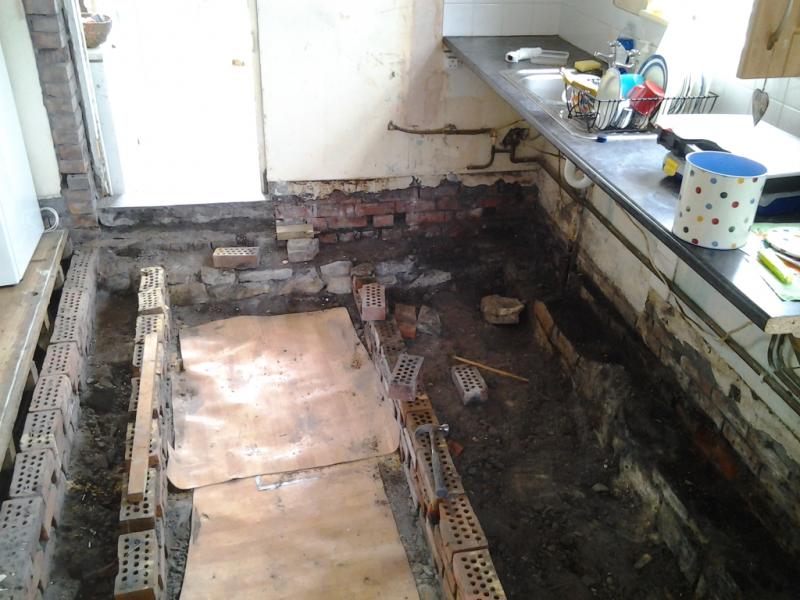I did post about this in the past, but assumed that there would be more than one brick under DPC and over footings. Having dug out now, I can see that to get the depth under DPC, i'd expose the footings...
Previous owners had concrete poured over DPC to make driveway. Substantial woodworm to adjacent floor boards.
Now digging down with plan to fill with washed gravel, but to what levels?
The bituminous strip is on top of a single brick over footings, which are large stones.
If I expose the footing stones, might they shift over time and should I point them?
I am uncertain about making a french drain- I cannot see water pooling, so is this not of use?
Previous owners had concrete poured over DPC to make driveway. Substantial woodworm to adjacent floor boards.
Now digging down with plan to fill with washed gravel, but to what levels?
The bituminous strip is on top of a single brick over footings, which are large stones.
If I expose the footing stones, might they shift over time and should I point them?
I am uncertain about making a french drain- I cannot see water pooling, so is this not of use?




